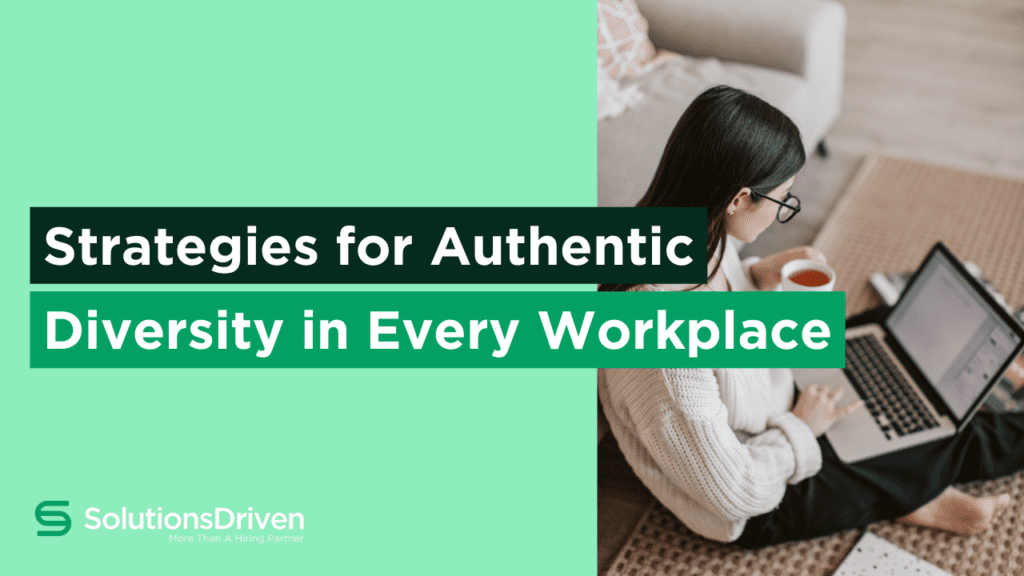Inclusion means more than just celebrations. To be a truly inclusive workplace, your business must put it at the heart of everything you do, bake it into your culture and your day-to-day interactions.
That’s not always easy. Many businesses don’t have the time or capacity to set up inclusion task forces or to hire a diversity officer. But inclusion is important, beyond just being the right thing to do. We live in an increasingly global world and our colleagues and workforces no longer look and act just like us. If businesses are to succeed against the increasingly difficult talent market and keep their best people, they need to make sure every employee feels included and feels like they belong in the team.
And while it might seem like a daunting task, it’s not an impossible one. There are many simple actions that can help your business become more inclusive. Here are our top actions:
1. Help Your Leaders Become More Inclusive
Diversity, equity, and inclusion comes from the top down. If your leaders aren’t bought into making DE&I a priority, they’re not going to push the agenda throughout the team. There are two ways to do this:
A. Ensure any new leadership hire knows the importance of inclusivity.
Build this into the interview process, include it in the job description, and make it part of everyone’s onboarding and training.
B. Train your existing team on how to be better inclusive leaders and create an inclusive workplace.
There are many external resources that you can use to improve your current team’s inclusivity knowledge. Our own CDO, Salma, holds surgeries and drop ins for clients and prospective clients regularly, and has bespoke training courses if you want more indepth sessions.
In the UK, Diverse Matters are an excellent organisation for training, while in the US, HRDQ offer online training courses that can help. Our Chief Diversity Officer, Salma, offers diversity and inclusion training courses too. Most countries will have their own versions of the two and while there will be an initial outlay, it will be worth it in the long run. Companies who have higher levels of racial and ethnic diversity are 35% more likely to have better financial returns. And diverse employees don’t stick around if the place they’re working in isn’t inclusive.
2. Conduct An Employee Survey
There’s no point putting steps in place to become more inclusive, if you don’t know how to include people. Get to know your employees.
In these remote times, it’s more likely you’ll be working with people of different beliefs, races, religions, and customs. And you won’t always know about them because you’re not hanging round the kitchen making coffee and having a chat with them. So an employee survey is vital.

Ask questions around religion, about what race people consider themselves to be, sexuality, location, and family status. Find out whether people feel they belong and whether they think your organisation is inclusive. These surveys can be anonymised so people don’t feel pressured to give the answers they think you want to hear.
Then use those answers as a basis for your inclusion plans going forward. If your employees don’t feel your company is inclusive, look at the breakdown of your team and think about how you can make different religions, sexualities, and races feel more included. Even if your people do feel included, there are still things you can do better:
3. Celebrate More Holidays Than Just Christmas and Easter
Many of you reading this will be in mainly Christian or secular countries and will traditionally celebrate Easter and Christmas, with holidays expected around this time. However, we increasingly live in a more mixed society, so being flexible with other holidays is becoming more important.
Take Eid, which is celebrated on a different dates every year and the date often isn’t set until just before. While many businesses might struggle with that level of flexibility, being able to offer those days off is an excellent way to make employees more included.
4. Give Your People Inclusion Autonomy
In one of our earliest episodes of our podcast, we interviewed Janet Oniya of Accenture. As a black mother, working in tech, Janet is a huge advocate of diversity and of an inclusive workplace.
At Accenture, Janet has been given the freedom to set up groups for women in the workplace, inviting them to gather and discuss women’s issues, concerns, and opportunities within Accenture and life.
Giving your people the autonomy to set up their own groups (within reason), means they don’t need to wait for leadership to make time to deal with their discussion points. It also allows employees to find groups that they feel they are a part of, helping foster a sense of belonging.
5. Think Outside The Box When Socialising
Remember when team hangouts mainly happened in the pub? With remote teams, people who don’t drink, and employees who have commitments outside work, a bar after work should no longer be the main way we socialise.
Consider different ways to foster strong relationships in an inclusive workplace that don’t require people to give up their own free time after work or not attend if they’re not in your location.
Some ideas:
- Set up a social group in each area to focus on fun activities or days out that everyone can enjoy
- A weekly team call where everyone shares a fun fact about themselves
- Group Zoom quizzes in a time-zone where your whole team can sign in and take part
- Virtual or real escape rooms that help with team building
6. Cross-department Coffee Breaks/Lunches
It can be easy for people to only really talk to the team members they work directly with, especially if your team is spread around the world. Which means we don’t get to know our colleagues as well as we should. And if we don’t know each other, we don’t know how to act inclusively towards each other.
Which is why setting up coffee breaks between people who normally wouldn’t interact is important. Not only does it help us get to know each other socially, it’s also a good way to foster good relationships if people in different functions do end up working together on a project.

By making this not only cross-departmental, but also across seniority levels, you can also help create advocates for more junior members of staff. If a senior member of the team has met and been impressed by a junior member of the team they’d likely never have come across at after-work drinks or on the golf course, they could then act as a voice for them in future promotional discussions.
And by holding these within work hours, it’s a chance to create these advocacies without people who are careers or have outside work responsibilities giving up their own time.
7. Use Inclusive Language For An Inclusive Workplace
Being an inclusive workplace isn’t just about what you say, it’s also about how you say it.
Right from the beginning of a hiring process, you should be communicating inclusively to your candidates. For example, using gender coded wording in job ads can put women off from applying. “Ninja”, “rockstar”, “strong”, and “competitive” are all examples of male-coded language that we wouldn’t necessarily realise. Need proof?
Thames Water changed their wording for a job ad, removing male-coded words like “competitive”, “champion”, and “confident” and female applicants increased six fold.
It’s not just gender that can be affected though. Using overly complicated language in English job ads can discourage non-native English speakers. With talent pools becoming more spread out and people having the ability to work all over the world, you could be putting off great talent.
These principles apply to internal communications too. Could you be alienating your female employees by describing other members of the team as “rockstars” or “ninjas”? Sure. They could feel like because they don’t have those male-coded qualities, they don’t belong. Or they could simply not understand what’s going on because you’ve used complicated, jargon-heavy language in comms.
Building an inclusive workplace can seem like a lot of work. But if you want to succeed in global business, get ahead of your competition by securing talent they can’t, and keep your great people, inclusion needs to be a major part of your strategy going forwards.
If you’d like to find out more about how Solutions Driven can help you with inclusion drop an email below.










